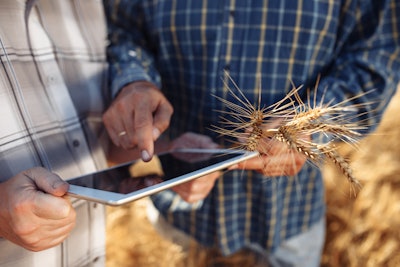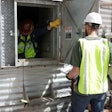
Dr. W. Scott Downey, professor in the agricultural economics department at Purdue University and director of the Center for Food and Agricultural Business, recently discussed how to develop relationships with your producers by understanding their inner motivations during his educational session, “The Role of Trust in Relationships.".
“How rational are you?” Downey wondered. “I am not an economist. I am a behaviorist.
“If you have an econ background, you know that economics starts from the assumption that people make rational decisions to maximize their utility,” he continues.
“A behaviorist’s mind focuses on the ways that they're not rational.”
It’s important to recognize that as you develop relationships with your producer customers, they may make decisions that appear to be irrational.
“Understanding the ways some of this thinking happens gives us an opportunity to be humble, to be forgiving and accepting of differences in how we view things,” says Downey.
“It helps us to be better informed about how people decide how they want to connect to our operations on grain and risk”
Downey says are there are five ways humans make observations that may appear irrational to others.
1. Confirmation bias
Confirmation bias is the tendency to search for, interpret, favor, and recall information in a way that confirms or supports one's prior beliefs or values.
“Confirmation bias says once we've got those beliefs, we begin to look at inputs to our beliefs that tend to be consistent with them,” explains Downey. “As we test our beliefs in the world, our focus tends to be on those that align with our same beliefs.”
Think about the relationship you have with a farmer customer and why that farmer chooses to bring their grain to you or not bring their grain to you.
“You begin to attribute reasons to why they make those decisions,” says Downey. “And the reasons that we tend to attribute are ones that align with our beliefs.”
2. Anchoring
Anchoring is a cognitive bias whereby an individual's decisions are influenced by a particular reference point or 'anchor.'
Once the value of the anchor is set, subsequent arguments, estimates, etc. made by an individual may change from what they would have otherwise been without the anchor.
Downey uses the example of the early days of COVID and the toilet paper shortage that ensued.
“When people began to see signs that limited them to three packages of toilet paper, they began to consider, should I buy more toilet paper?” he explains. “Without that sign, they would have only bought what they needed. One package instead of three.”
Downey notes our mindset gets expanded by anchoring. “With the sign, you think, maybe I should buy three because there might be shortages,” he says. “You shift the behavior of the decision making toward, ‘I was only coming here to buy one, but maybe I should buy three.’”
How you present the tools you have to help customers manage risk can help move them away from their anchor.
“As their sales rep, you can shape and begin to broaden the scope of possibilities for how they manage risk and anchor their behavior,” he explains.
“By broadening out that set of possibilities, you potentially move them off one possibility – their anchor. You can get them thinking there are other things they should consider.”
3. Survivorship bias
Survivorship bias is a common logical error that distorts our understanding of the world. It happens when we assume that success tells the whole story and when we don't adequately consider past failures.
“The brain is really good about keeping certain things at the forefront of our memory,” says Downey. “Some items get buried so far in our memory, they’re forgotten.”
Downey says there's a recency bias that is connected to this survivorship bias. The person only considers a small portion of what they should potentially consider.
This can help you understand your customer’s decision making. Do they only call us for a grain price? Or do they also price online? Why do they choose one over the other or do both?
“If you really want to understand how somebody makes decisions, understand what those remembered aspects are or how we can take forgotten items and better connect them to their memory.”
Downey says items that have an emotional connection for us are remembered more than the things that are based on facts and rationality.
“Once we understand this, we're better at how we communicate our value,” he says.
4. Loss aversion bias
Loss aversion bias is the tendency to prefer avoiding losses to acquiring equivalent gains.
“Most of the time, we are more afraid to lose what we have then see the benefit of gaining something,” explains Downey.
The Monty Hall problem is a great example of loss aversion. Monty Hall was a game show host on “Let’s Make a Deal.” Contestants would choose what was behind door number one, door number two or door number three to win the biggest prize.
Once the contestant picked a door, Monty would open one of the doors the contestant didn't choose and ask, “Stay with your choice or switch?"
"Doing the math will reveal that staying with the door you have will be less productive than picking the other door. But the fear of switching is bigger in people's minds than the benefits of switching,” notes Downey.
When it comes to your producer customers, recognizing that for them to make a change with a perceived risk – whether the risk is real or not – shapes the way they view things.
5. Availability heuristic
Availability heuristic describes our tendency to use information that comes to mind quickly and easily when making decisions about the future.
“If our brain wasn't good at ignoring stuff, it would be overwhelmed all the time with too much information,” says Downey.
“But because of this ability, we tend to make decisions only on a very narrow set of information that captures our attention.”



















